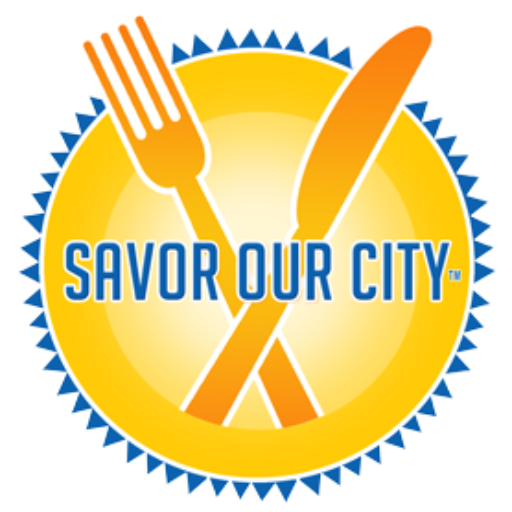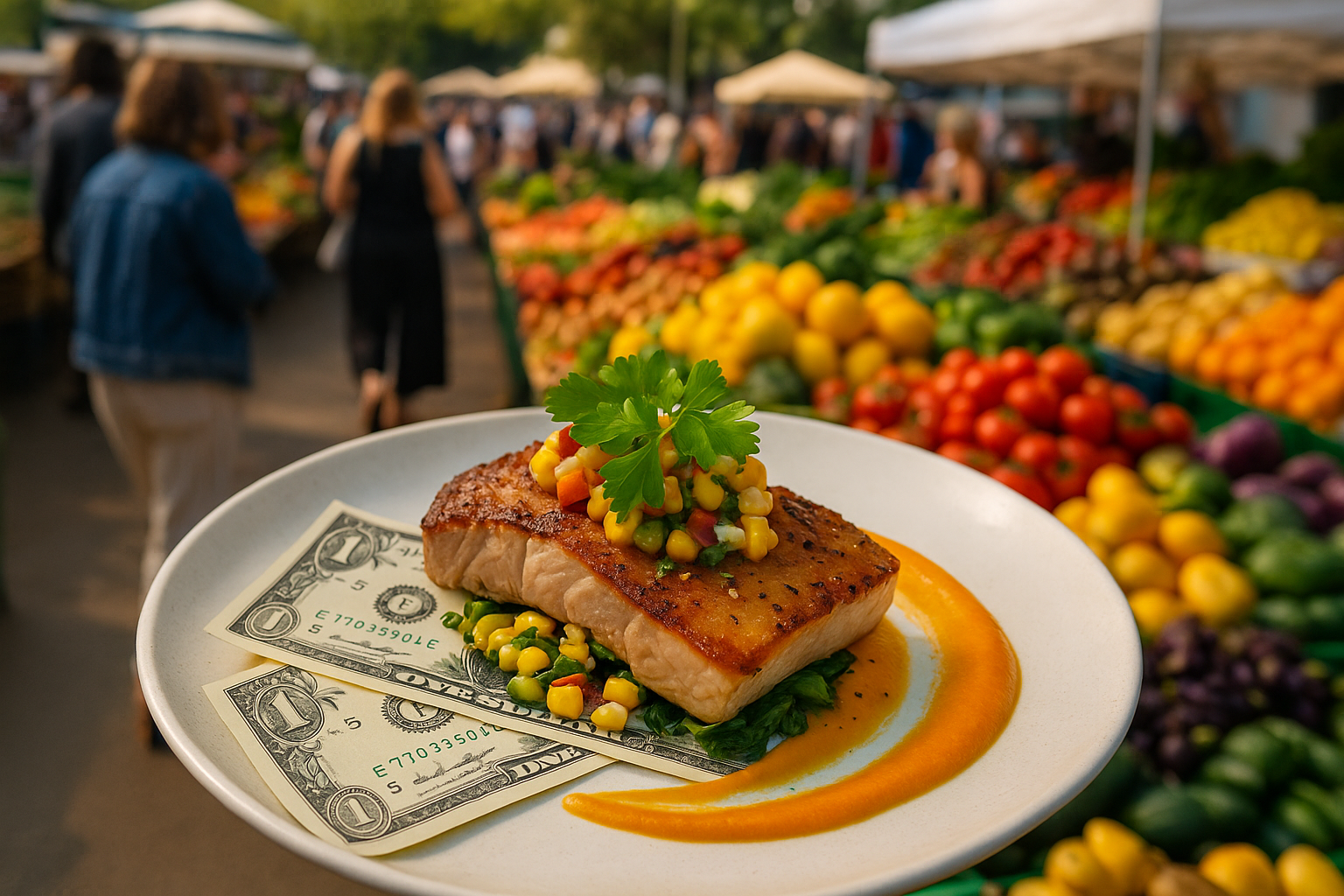Big shifts are brewing in the food world—and they’re about to show up on your plate and in your shopping cart. With new tariffs and trade policies taking shape, Americans will likely notice rising costs, tighter ingredient sourcing, and subtle (or not-so-subtle) changes in the way restaurants and supermarkets operate.
Here’s what you need to know about how it’s all unfolding—and how it might change the way we eat.
Tariffs and the Changing Price of Your Plate
In response to shifting global trade dynamics, the U.S. is rolling out new tariffs on imported goods, including many agricultural products, ingredients, and packaged foods. Items like seafood, olive oil, certain produce, coffee, wine, cheeses, and even cooking equipment may now carry a higher price tag as importers pass increased costs down the supply chain.
In short: if it’s imported, it’s about to get more expensive—and that has ripple effects across the entire food industry.
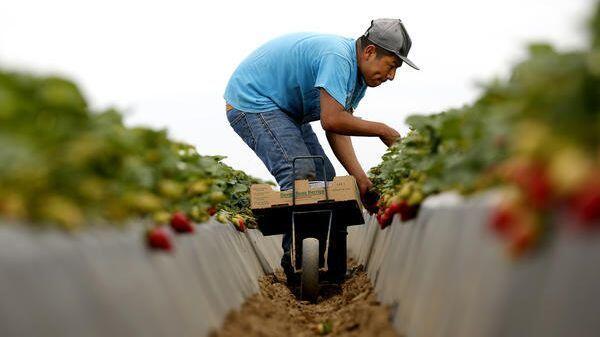

Just How Interconnected Is the American Food System With Global Trade?
While the United States produces a significant amount of its own agricultural goods, we also rely heavily on imports for many of the foods we eat every day. From tomatoes, peppers, and avocados from Mexico to cheese and beef from Canada, olive oil from Europe, and coffee from Latin America and Africa, the U.S. imports an astonishing variety of essential ingredients to meet consumer demand for year-round availability, diverse cuisines, and specialty products.
The infographic clearly shows that Mexico and Canada are two of our largest agricultural trade partners, supplying everything from fresh fruits and vegetables to meat, dairy, grains, and seafood. Other major contributors include European nations like Italy, Spain, and Germany, and countries throughout South America and Asia, especially for staples like rice, spices, cocoa, and tropical fruits.
This heavy reliance on imports underscores why tariffs and global trade shifts matter so much—not only to supermarket prices but also to restaurant menus and home kitchens. Any disruption, cost increase, or policy change affecting global trade can ripple directly onto our plates. As food lovers and conscientious consumers, understanding where our food comes from reminds us just how global—and yet how vulnerable—our food supply really is.
At the same time, these realities offer a powerful reminder of the importance of strengthening our local food systems. While we enjoy the richness that international foods bring to our tables, investing in regional farming, supporting domestic producers, and embracing seasonal eating can help cushion some of the shock of global shifts. A thriving local food scene isn’t just a luxury—it’s an essential part of building a more resilient and sustainable future for American dining.
How Supermarkets Will Change
Grocery shoppers will likely feel the impact of tariffs first and most often. Imported items we’ve come to rely on—like canned tomatoes from Italy, fine olive oils from Spain, or creamy cheeses from France—may no longer be everyday staples, but occasional luxury purchases reserved for special meals. Rising import costs mean that specialty foods could either disappear from shelves altogether or become noticeably more expensive, nudging many shoppers to seek out domestic alternatives.
But it won’t just be specialty items. Even everyday basics like bananas, avocados, berries, and out-of-season vegetables—which the U.S. heavily imports—are expected to see gradual price increases over the coming months. These shifts may lead supermarkets to restructure their offerings, focusing more on seasonal, locally grown produce and domestically sourced products to keep prices manageable and supply chains more stable.
As a result, shoppers may find smaller selections, higher prices, and a stronger emphasis on seasonal eating as the new normal in grocery stores across the country.
Expect to see:
- Higher prices on imported pantry goods and produce
- More local alternatives on shelves
- Reduced selection in specialty food aisles
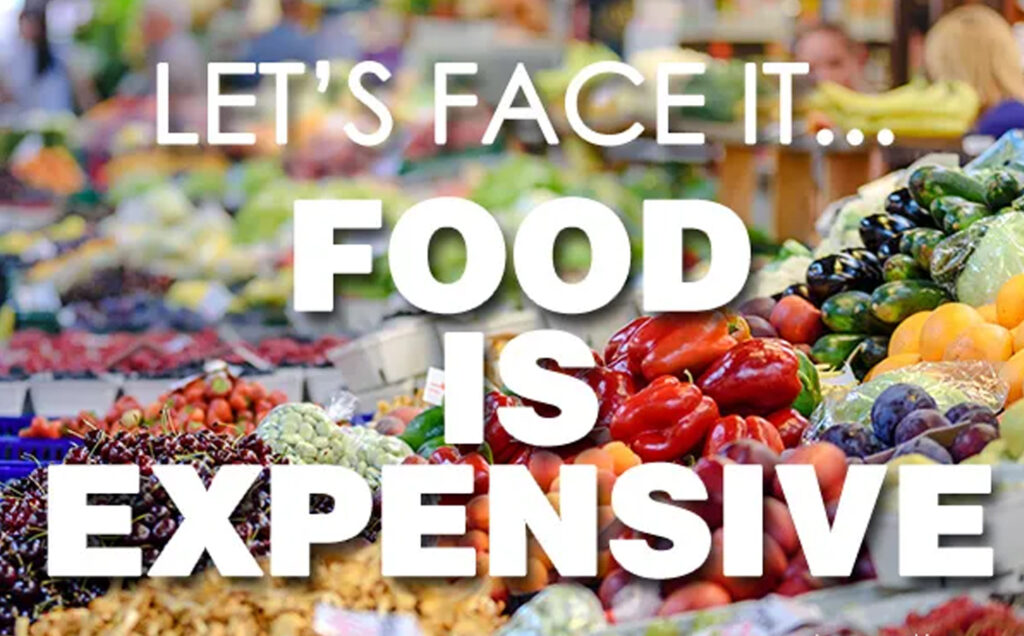
What Restaurants Are Facing
Restaurants, especially those offering international cuisines, are in a tough spot. Chefs who depend on imported ingredients will either pay more, revise their menus, or get creative with domestic substitutions.
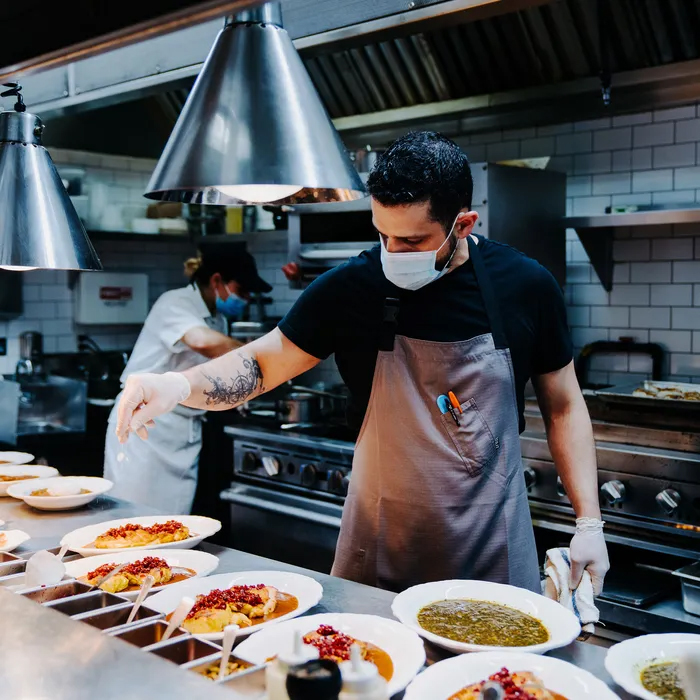
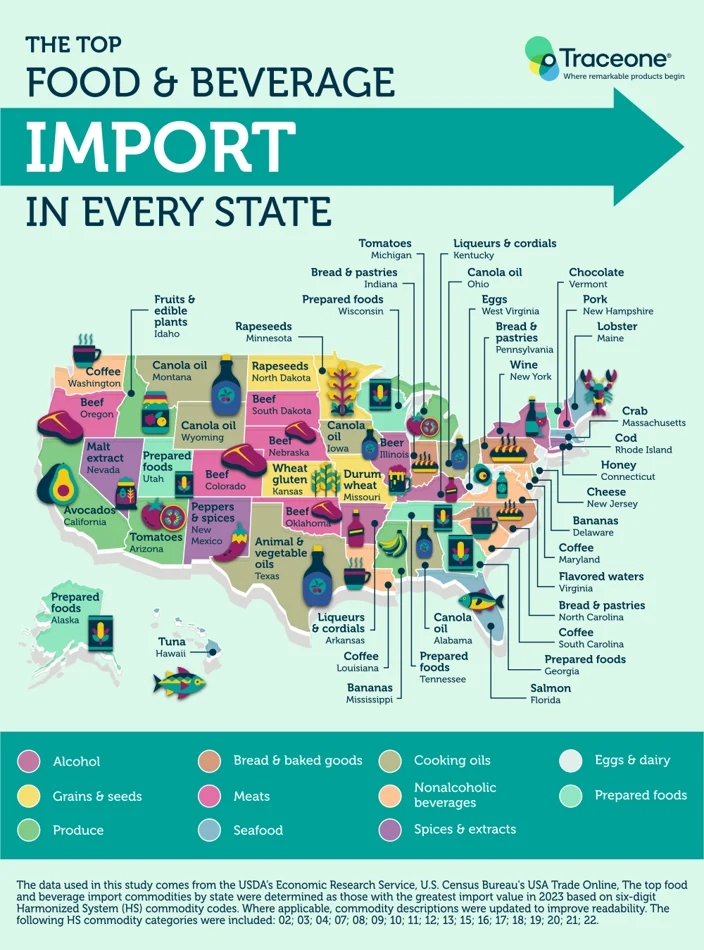
According to a Trace One analysis, the leading imported items by state include:
- Prepared Foods: Top import in five states.
- Canola Oil: Top import in five states.
- Beef: Top import in five states.
- Coffee: Top import in four states.
- Bread and Pastries: Top import in three states.
Notably, while beer is the top food and beverage import nationally, Illinois is the only state where it ranks as the number one state-level import.
Likely changes include:
- Menus adjusted to feature more regional American ingredients
- Portion sizes shifting slightly
- Pricing increases at mid-range and fine dining spots
Restaurants may also lean harder into farm-to-table partnerships and hyperlocal sourcing to maintain quality without passing excessive costs onto diners.
Local Love: A New Focus
If there’s a silver lining, it’s this: the tariffs could spark a powerful local food movement revival.
Expect farmers markets, local bakers, boutique cheesemakers, and American wineries to shine brighter than ever before.
Supporting small businesses will feel less like a luxury and more like a vital part of keeping communities strong and menus exciting.
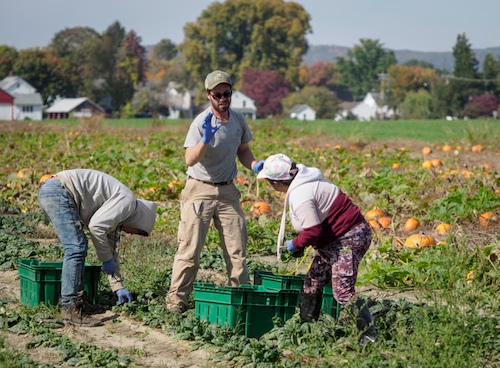
How to Stay Ahead (and Still Eat Well)
- Stay flexible: Try new local flavors and seasonal swaps
- Support your favorite local restaurants: They’re adapting fast and need your support
- Plan your splurges: Imported cheeses or wines may become occasional indulgences
- Celebrate the creativity: Chefs and food makers are masters at turning challenges into flavor adventures
The Local Food Revival: A Golden Opportunity
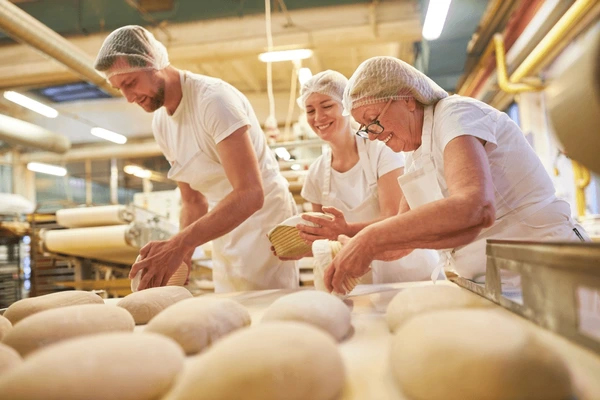
The new wave of tariffs, while challenging in many ways, could spark a powerful revival of the local food movement. As imported goods become more expensive and less abundant, the spotlight naturally shifts toward the incredible bounty produced right here at home. Farmers markets, local bakers, small-scale cheesemakers, craft breweries, and American wineries are poised to shine brighter than ever before—offering quality, creativity, and a deeper connection to the food we eat.
For consumers, supporting local will no longer feel like a splurge or a niche choice—it will become a vital and exciting way to nourish communities, protect food traditions, and keep menus vibrant and evolving. Restaurants and home cooks alike will be re-inspired to celebrate regional flavors, seasonal ingredients, and the stories behind the foods they serve. In many ways, these challenges could usher in a golden age of American-made flavor, rooted in resilience, innovation, and pride in what we grow and create together.
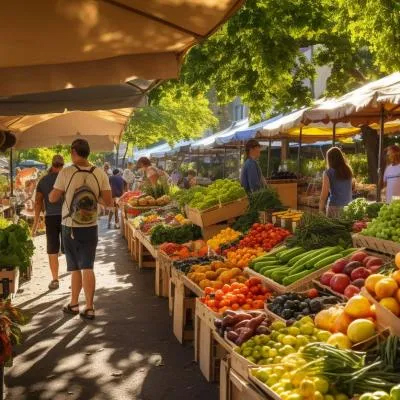
Dining out will play an equally crucial role. Our favorite restaurants—especially independent ones—are often built around delicate margins and hard-earned creativity. They are the gathering spaces where food becomes experience, and culture becomes connection. As ingredient costs rise and sourcing shifts, going out to eat becomes not just a luxury, but a lifeline for the businesses that bring flavor, innovation, and hospitality to our neighborhoods. Every meal shared at a local restaurant helps keep doors open, kitchens busy, and talented chefs inspired to adapt and create.
As passionate advocates for the food and restaurant community, we at Savor Our City are committed to staying on top of the economic issues that impact the way we eat, shop, and dine—when the food world shifts, we believe knowledge (and a little creativity) makes all the difference.
Until we savor together again…
Wishing you delicious adventures, xoxo
Jennifer
